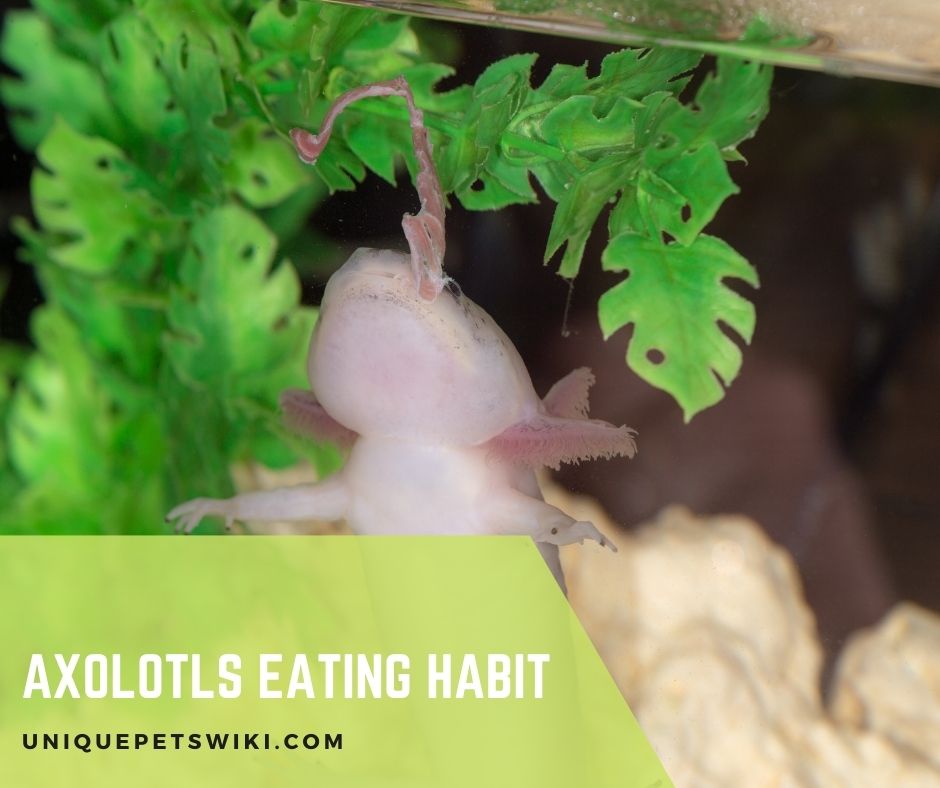You cannot think about raising an axolotl pet without thinking about what they eat. The health of an axolotl and its eating habit are inextricably intertwined.
If you wish your axie to be strong and in good health, it’s not magic that happens anyhow, but you need to invest much in feeding your beloved friend.
Food enriches the body with nutrients and gives it the energy to get through the day and life. Axolotls do not eat everything, but they have their natural diet.
If you are curious to know the axolotls eating habit, this is the article you are looking for. Keep reading to get every information regarding the feeding habit of axolotls in the wild and in captivity.
Contents
Axolotls Eating Habits
In the wild, the axolotl diet comprises a lot of worms, but they also eat insect larvae (such as mosquitoes), small fish, frog tadpoles, snails, and other mollusks.
The pet axolotls don’t need a special diet except for what their wild counterparts eat.
Altogether, axolotls are carnivorous animals, and they will gladly consume any animal that can fit into their mouths.
Meat is a thing for axolotls, and this automatically tells you that there is an animal that will not survive in the presence of an axolotl.
They eat other animals, including insects, worms, fish, frogs, eggs, etc.
Let’s say that these little companions will barely turn a blind eye to the small animals in front of them. They are not picky about what kind of meat they consume.
When food is unavailable for these opportunistic predators, they are known to practice cannibalism, sometimes eating away parts of their young ones.
Also read: Axolotls Eating Each Other: Causes and Solutions
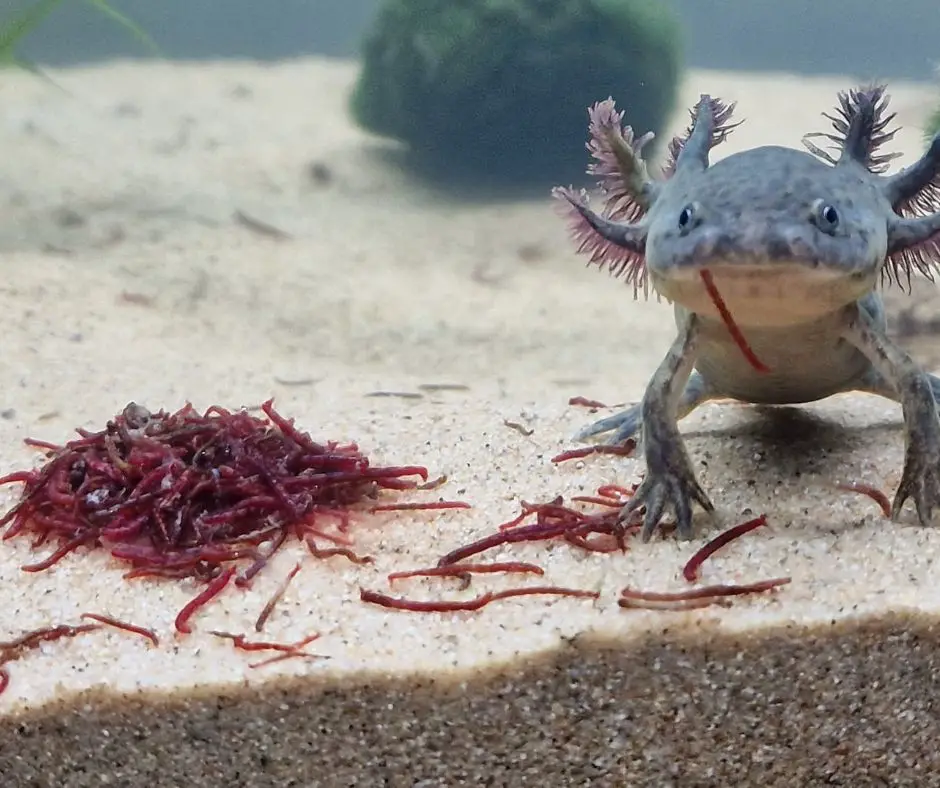
What do Axolotls Eat?
As carnivorous creatures, axolotls cannot consume any kind of plant matter, even in the worst circumstances when food is scarce. They only enjoy flesh as other meat-eaters would do.
Every axolotl desire to live in its natural home and eat natural food. Therefore, it’s necessary to ensure that whatever you’re feeding your pet axie is what a wild axolotl can munch.
Lake Xochimilco, which is a natural habitat for axolotls, offers myriads of creatures for axolotls to feast upon when hungry.
Among these creatures are crickets, insect larvae, frog tadpoles, small crustaceans, small fish, worms, snails, and slugs, just to mention a few.
Axolotls will also munch on other small salamanders that frequent the lake. You have the list of wild axolotls’ favorites, so don’t scratch your head wondering what to offer to your axie.
Brine shrimp, blood worms, earthworms, blackworms, daphnia, lean pieces of chicken and beef, fish, tubifex worms, etc., are highly nutritious and appetizing foods for the pet axolotls.
You can also provide your axie with commercial pellets and multivitamin supplements.
The young and baby axies will consume only live foods until they grow around 2cm in length. They will comfortably eat baby brine shrimps, micro worms, and daphnia.
Check out: What Can Axolotl Eat?
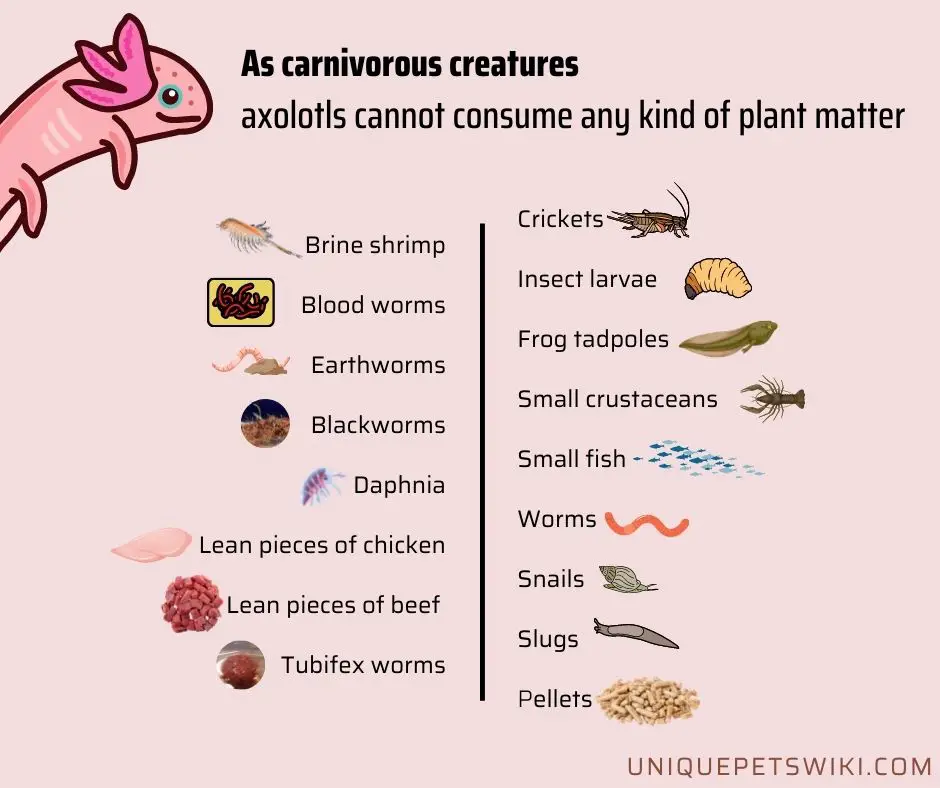
How Do Axolotls Eat Their Food?
Axolotls are adept at hunting, and they prefer to hunt in the dark or dim light, whereas in the daytime, they hide in the mud along the bottom and among aquatic vegetation to avoid predators from spotting them.
Animals such as herons, storks, and large fish are the biggest axolotls’ enemies.
Axolotls have a remarkable sense of smell that enables them to quickly locate prey along the muddy bottom of their natural home.
Axolotls’ teeth are tiny and vestigial, meaning they are functionless, and that’s why these animals proceed to swallow whole prey.
Likewise, these creatures use a strong vacuum force to suck up the prey into their mouth instead of biting on it.
They inhale gravel together with the prey, which assists in grinding up food in the stomach for easier digestion.
How Much and How Often Does an Axolotl Eat?
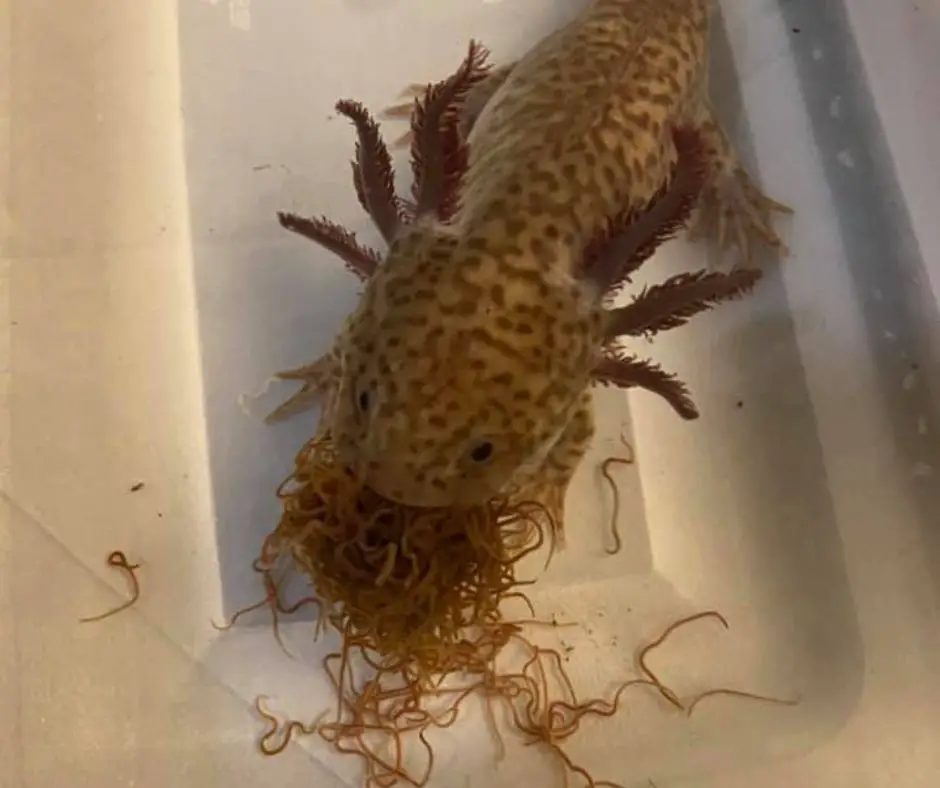
You might overfeed your axie if you’re uncertain of the food quantity to feed and how often you let it eat.
Providing excess food to axolotls can be problematic, as it typically results in digestive issues and the axolotl rejecting food.
These salamanders don’t need so much food. Ideally, feeding an adult axolotl 1-2 earthworms every other day is sufficient to keep it healthy and free from hunger.
However, baby axolotls need feeding every day since they are developing and demand an abundance of nutrients to grow healthy and vigorously.
The babies under 3 inches need to eat 2 times per day, while juveniles between 3-5 inches should eat once. A healthy axie will survive for 2 weeks without food, but it’s not recommended to keep them this long.
As axolotls continue growing, they will gradually reject the food you offer, which signals you to reduce your number of feedings.
Axolotls don’t go unnoticed when hungry. Different axolotls can manifest different signs of hunger.
Some will tap or dance around the glass, some gather around their feeding dish, and some will stand with their nose pointed down immediately after seeing you entering the room.
Axolotls typically appear more active when hungry.
Most axolotls refrain from food when they are full. However, some axies don’t show a break, especially when eating their favorites.
They don’t stop until they finish all the worms you provide; hence, knowing how much to feed is upon you.
Also read: How Often Do Axolotls Eat?
Tetra BloodWorms, Freeze-Dried Food
- AQUARIUM DIET SUPPLEMENT: Freeze-dried bloodworms are a nutritious supplement to boost energy and conditioning in your aquarium fish.
- FOR FRESHWATER & SALTWATER FISH: Perfect for bettas and ideal for small- to medium-sized tropical and marine fish.
- SPECIALLY PROCESSED: Minimizes any undesirable organisms found in live bloodworms.
- CHILD-SAFETY LID: Tetra BloodWorms should be kept out of reach of children.
- USAGE: Feed 2 to 3 times a week in addition to staple diet, only as much as your fish can consume within a few minutes.
Last update on 2022-12-29 / Affiliate links / Images from Amazon Product Advertising API
How Do You Feed an Axolotl?
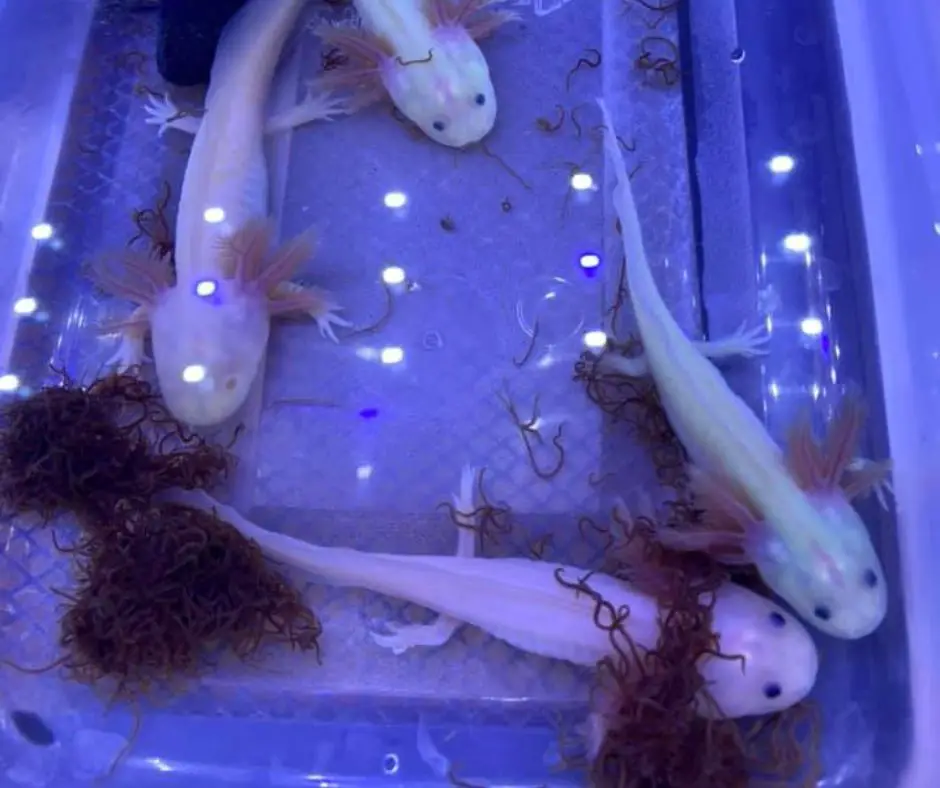
The sense of smell for baby axolotls is a bit weak and depends on spotting the movement of a food source, and that’s why you should always feed them only live foods.
The key consideration when feeding axolotls is the size of food you provide. Axolotls have shallow teeth that cannot chew food. The teeth help them to grip down on smaller animals and swallow them.
So, therefore, cut all foods that axolotls will not swallow whole into smaller pieces. Likewise, don’t provide too small food since they can stick to their gills.
Long tweezers, turkey baster, and feeding dishes are practical tools for feeding axolotls.
If you’re using long tweezers, only use those with blunt edges to avoid injuring your pet. The tweezers allow you to grab a bite of live food without harming others and feed the axolotl.
The turkey baster makes it possible to remove leftovers from the aquarium conveniently.
A large dish will also be an excellent tool to feed axolotls if you aim to avoid creating a mess in the tank.
After feeding, it’s essential to remove all leftover foods; if left in the tank, the food will rot and cause ammonia to flare up, exposing your axy to health problems.
Also read: How to Keep An Axolotl Tank Clean
Hikari Bio-Pure Freeze Dried Daphnia
- Patented Ratcheting Dispenser Top
- Will not cloud the water
- Multi-vitamin rich to reduce stress and stress related diseases
- Free of parasites and harmful bacteria
- Nitrogen charging reduces oxidation prior to opening
Last update on 2022-12-30 / Affiliate links / Images from Amazon Product Advertising API
Conclusion
Axolotls have a huge list of edible foods, including earthworms, insects, snails, slugs, brine shrimp, daphnia, frozen foods, small crustaceans, smaller salamanders, smaller fish, frog tadpoles, you name it.
You should source all worms and insects from an organically farmed garden to avoid feeding your friend with chemicals at all means.
Likewise, water-based foods like brine shrimp, blood worms, etc., may contain disease-causing organisms, hence, be careful when feeding them to your pet.
Axolotls don’t chew food, but they swallow them directly.
Also read: 5 Best Axolotl Commercial Food
